Plans for Haiti
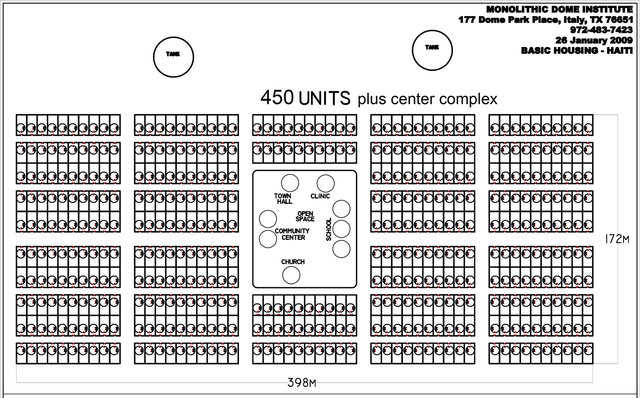
The drawings here represent proposed plans for the rebuilding of Haiti. Monolithic is doing everything it can to make this happen for this struggling country.

The drawings here represent proposed plans for the rebuilding of Haiti. Monolithic is doing everything it can to make this happen for this struggling country.

Most folks just don’t associate Florida with tornadoes. Most think of Florida as hurricane country. But Harrilyn and Rudy Watts know better. They live 21 miles south of Chipley. It has a population of about 3600, a motto that describes it as “A small town with a proud heritage and a bright future” – and tornadoes.
The Cagle family had planned to build a traditional home along the Carolina coast before Hurricanes Bonnie and Fran slammed onshore. It wasn’t so much the severity of the storms that made the Cagles change their minds. It was actually the stringent new building codes that caused them to reconsider their construction choices.

When designing your dome for residential or commercial use, it’s worth thinking through multiple construction possibilities early in your planning. Floor plans and fixtures might take up the bulk of your time, but an often overlooked issue is the dressing out of your exterior windows.
A third school district has received a grant from the Federal Emergency Management Agency (FEMA) to build a Monolithic Dome school. The Dodge City Daily Globe is reporting that FEMA will provide a $345,000 grant to USD 225 in Fowler, Kansas to cover a portion of the construction costs of a new school facility, which meets standards for near-absolute protection from tornadoes and hurricanes.
With Christmas just a few days away, have you decided what you’ll be getting for that hard-to-buy person on your list? The Austin Chronicle is urging its readers to check out the Monolithic Dome gifts that we showcase on our website.

So after all the back-slapping, hand-shaking and fan fair during the Airform inflation, you’re finally ready to get down to the business of interior construction. From inside, you’re admiring the eye-catching, organic shape of the inflated Airform and the ethereal translucence as the sunlight filters through fabric, when a contractor derails your train of thought.

These days news travels faster than ever with social media sites like Twitter and Facebook adding to the viral nature of the Internet. So it’s no surprise that Monolithic Domes are making news on blogs and other Internet sites dedicated to green housing.
The city of Woodsboro is receiving a $1.5 million grant from the Federal Emergency Management Agency (FEMA) to fund construction of a “Monolithic Dome school gymnasium/community center”: /topics/sports that will double as a county disaster shelter. Woodsboro is located near the Texas Gulf Coast and has sustained damage from Hurricane Ike and other severe storms.
The city of Woodsboro is receiving a $1.5 million grant from the Federal Emergency Management Agency (FEMA) to fund construction of a Monolithic Dome school gymnasium/community center that will double as a county disaster shelter. Woodsboro is located near the Texas Gulf Coast and has sustained damage from Hurricane Ike and other severe storms.
An Idaho real estate investor will help the world go round when she breaks ground next February on 139 Monolithic Dome homes in Chiclayo, Peru. The project will be a first for Sube International LLC, which Lynda Eggimann founded earlier this year to build dome homes in the developing world.

A Monolithic Dome makes an ideal fertilizer blend plant that mixes, packages, stores and distributes specialty chemicals for various agricultural purposes. These domes contain many large bins used to store phosphorus, potash and nitrogen in various forms, as well as other micronutrients such as iron, chrome or zinc. From these ingredients, hundreds of different fertilizer formulas can be created.

There’s not much to look at as you drive up Interstate 44 from Texas into Oklahoma – until you get a bit south of Lawton. Then, surprise, surprise! Off to your right you spot the rounded tops of a cluster of copper colored Monolithic Domes, just sitting there in the middle of what appears to be nowhere. It isn’t. It’s Geronimo, Oklahoma, 0.53 square miles of Comanche County and home for almost 1000 residents.

David and Su-Z Allen can relate to the old phrase that even the best-laid plans often go awry. In the process of building their new Monolithic Dome home, “emergencies keep cropping up,” Su-Z told a reporter for The View newspaper in Las Vegas. But even though it is not yet finished, the Fenix Dome is an “impressive and eye-catching structure,” according to the article. “There is literally nothing like it in town.”

Jay and Jeanne Hansen say they like to be different, and that’s one of the reasons why they opted to build a Monolithic Dome home. “We don’t like to copy what other people do; we like to do things that stand out,” Jay Hansen told Iowa television news station KWWL.
For thirty plus years America’s leaders have been wanting more energy efficient, more hazard resistant, more cost efficient green structures for houses, churches, schools, etc. To those leaders and citizens we now say: We have such structures! Please implement the rules to allow them to happen.
Construction costs have stayed stable throughout October and November, 2009.

The concrete dome is similar in shape and structure to an egg which has always been a fascination. The egg shows us that a relatively soft and weak material can be used to create a very strong structural shape. A simple demonstration illustrating the strength of an egg was made using a 2′ × 10′ wood plank, supported on one end by a rigid support and on the other end by one hard boiled egg. Four bags of Portland Cement were placed on the plank, at center span, one at a time, for a total of 376 pounds or 188 pounds on one egg. The shell did not crack! Such is the strength of some domes.
Homeowner tax credit is renewed and expanded.
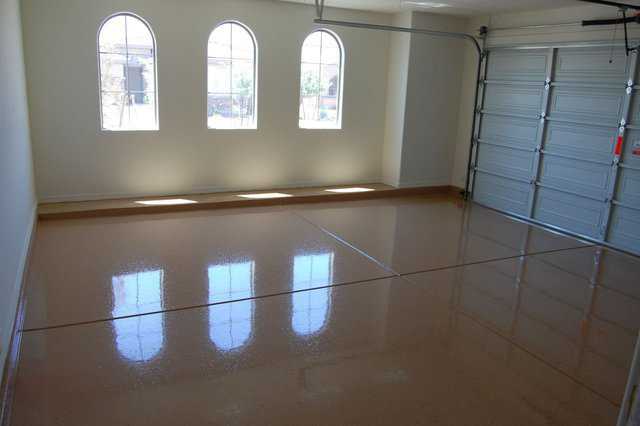
Epoxy coatings are a simple way to improve the appearance and maintenance of a garage floor.

Spacious and spectacular Monolithic Dome churches provide near absolute protection from fire, tornadoes, hurricanes and earthquakes.

On Friday, December 2, 2005, the Southern Sudan Education Project (SSEP) held a banquet and fundraiser at the Utah Multicultural Center in Salt Lake City. The keynote speaker for the event was Manute Bol— best known as the “Tallest man in the world.”

After retiring his position as an American Airlines’ flight dispatcher at DFW, Don Steelman enrolled in one of Monolithic’s hands-on Workshops. What he learned and did convinced him of the innate qualities of a Monolithic Dome home. Impressed by the dome’s longevity and energy efficiency, Don and wife decided to move to Mohave Valley, Arizona and build a Monolithic Dome home.

Consider the ubiquitous pizza. How do you like yours? With extra pepperoni and mushrooms? With peppers and onions? With one topping or the works? Picked up piping hot from the pizza shop? Or from the grocer’s freezer and baked in your oven? Maybe you’re the adventurous soul who makes their own dough and cooks their own sauce. Do you value convenience or quality? The next time that pizza is on your dinner menu, what type will it be?

When dealing with something as “delicate” as an Airform (Airforms are as tough as a boot but because of their weight they seem delicate), rips and holes will happen. The best way to deal with these problems is to be prepared for them. This article reviews a few of the things you can do to fix such problems.
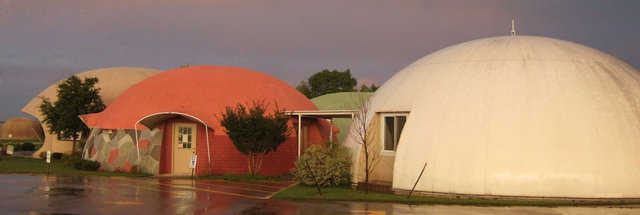
Being the coinventor of the dome and the founder of the Monolithic Dome Institute has given David B. South the opportunity to not only fine tune the building process, but to create a company whose main mission is to make available Monolithic Dome technology to all the world. It is the hope of Monolithic to educate the public about Monolithic Domes and to provide professional services to its customers by creating a successful partnership with them through all phases of their dome design, planning and construction.
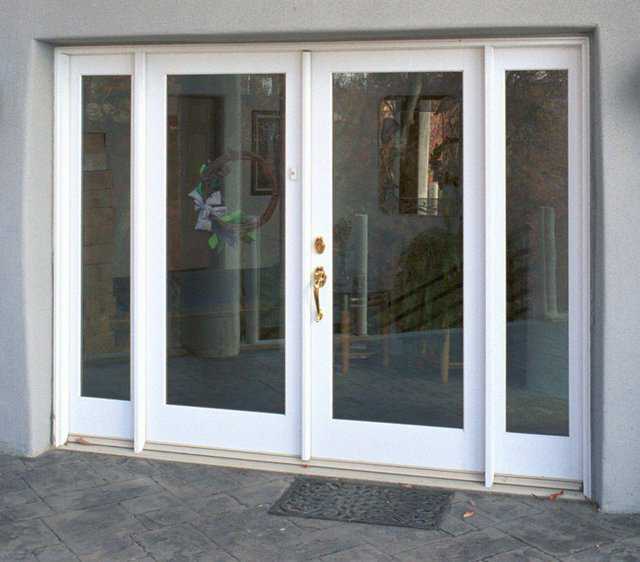
A cost index won’t tell you what your house will cost, but it does show you opportunities for upgrades and downgrades, and it does show trends.
A graduate of Monolithic’s five-day workshop is involved in an ambitious project to build a 6,000-square-foot Monolithic Dome science complex in Oregon. Ashleigh Wolf attended one of the Monolithic Dome Institute’s workshops along with a small team from the Department of Science and Engineering for the Confederated Tribes of the Umatilla Indian Reservation.

Combine an eco-friendly recycling facility with the greenest of all buildings, and you have a perfect match. That’s what residents of Edmonton will have once construction is completed on a $10 million closed-loop recycling facility that will be housed in a Monolithic Dome.
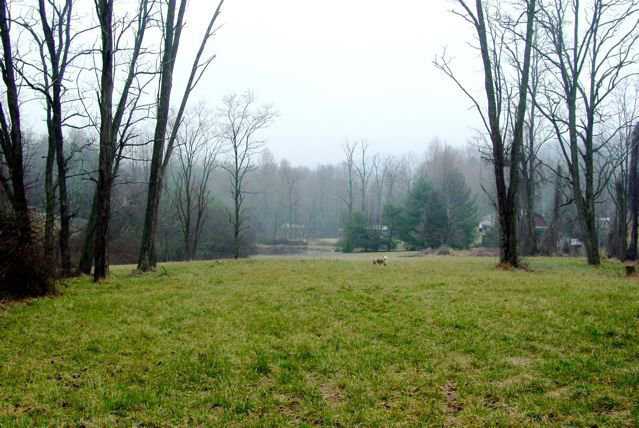
Estimating the cost of a house is tricky because houses have so many parts. Industry averages aren’t a substitute for a specific estimate for a specific plan, but they help to show trends and tendencies.
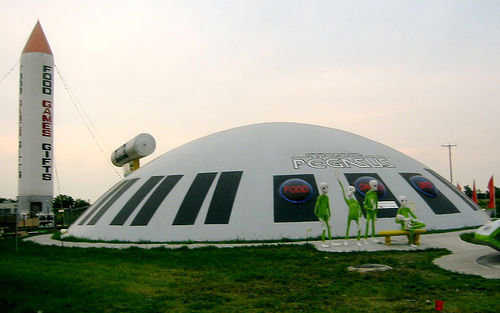
The Starship, a fully outfitted as a restaurant or fast food operation is available for sale or lease. It has a complete kitchen, a large open space dining and entertainment area, a large walk-in freezer, a security system, and serving and food preparation areas.
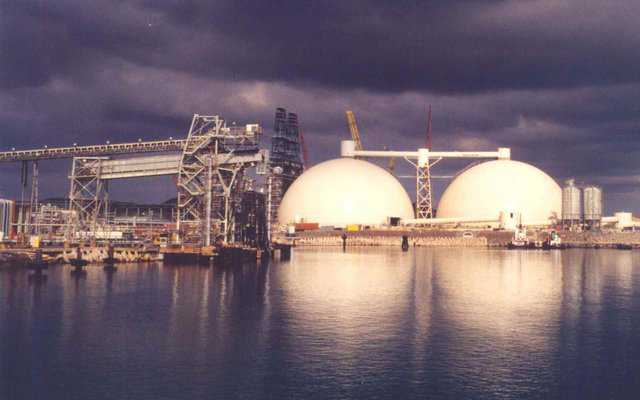
Monolithic Dome bulk storages have been constructed around the world to store chemicals, fertilizers, cement, sand, salt, feed, grains, aggregates, carbon, chips, seeds, peanuts, coke, blasting powder – and the list goes on.
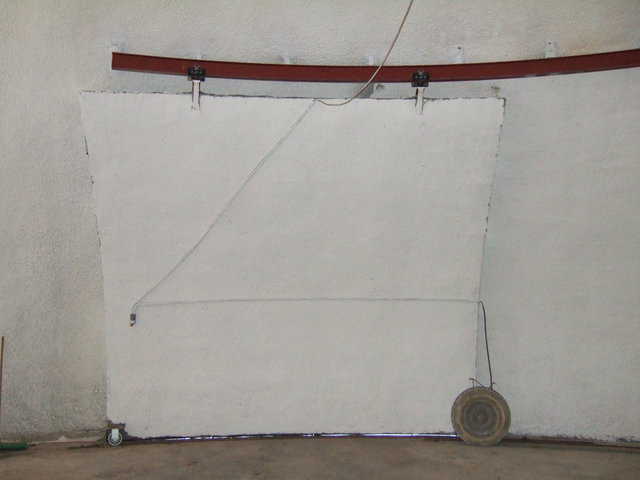
“This is really dynamite! I’m amazed at how it is expanding. When I first started, I never even imagined the possibilities we’re now coming up with.” The speaker is a delighted David B. South, president of Monolithic and the “This” and “it” David is talking about is the Monolithic Door.

Built using cutting-edge technology, Monolithic Dome arenas are much more affordable to buy and operate than are conventional structures. They are multifunctional and can be designed for basketball, indoor soccer, arena football, volleyball tournaments, conventions, roller hockey, concerts and ice hockey.
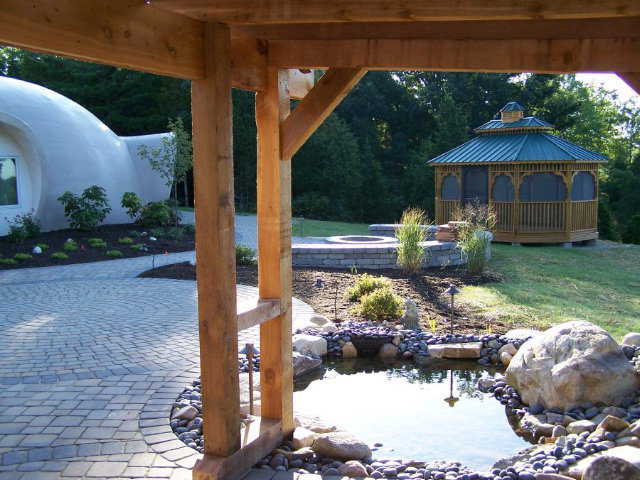
Allocate sufficient time and budget to finish the entire house before taking a break. The results are worth the extra effort.

We often design a Monolithic Dome with a vertical stemwwall that goes straight up and acts as a base for the dome. Over the years, we’ve developed several ways of building stemwalls and have tried several options.

Chris Zweifel shows how an Airform and some cleverness make a one-of-a-kind winter dome.

I’ve discussed solar electric with numerous clients over the years, so I figured it would be instructive to go through the process myself. Most of those clients considered solar in the context of living off-grid, totally separating themselves from the power company. In almost all cases it was prohibitively expensive because of the size of the solar arrays and storage needed to fulfill 100% of power needs.
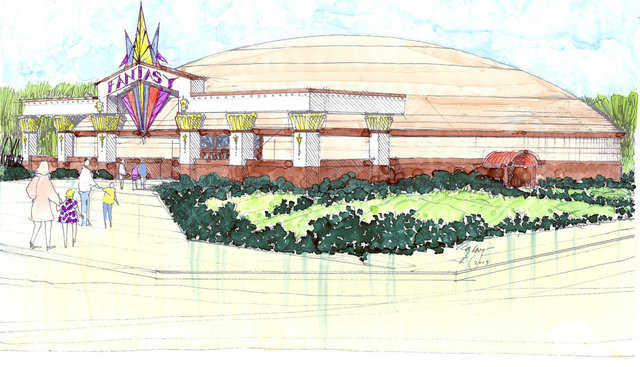
In an interview with Leland, I asked why Monolithic Domes provide the ideal architecture for movie theaters. Leland said, “Theaters should look unique. They always have. That’s tradition with theaters. Monolithic Domes are the perfect structure to provide a unique and interesting theater on the outside and the inside. People are attracted to the unusual.”

Modern Day Dream Homes includes exciting video footage of the fire which threatened the Braswell home in California, and much more.
Polk County, Florida is all too familiar with the devastation of hurricanes. Three major hurricanes hit the state in the span of two months in 2004, flooding the county with high winds and torrential rains. Five years later, some are wondering whether local residents have developed disaster amnesia. In a series of articles on the lessons learned from the hurricanes, the News Chief quotes experts who warn about the importance of preparedness. Among those quoted is the Monolithic Dome Institute’s own David South.

The Muscogee (Creek) Nation recently broke ground a 160-foot diameter Monolithic Dome multipurpose facility adjacent to an existing sports complex in Okmulgee, Oklahoma. The Muscogee Phoenix newspaper covered the groundbreaking of the $4 million facility, which is scheduled for completion in 2010.
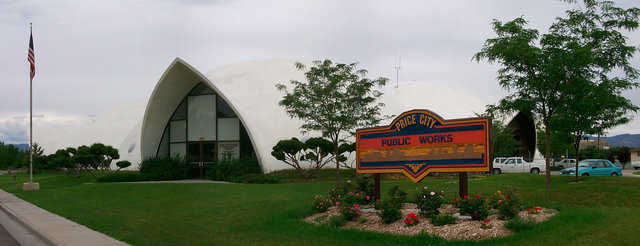
A uniqueness in Price, Utah is its four, interconnected Monolithic Domes, serving as its Public Works Complex since 1982. It consists of a three-story dome, 90′×40′, with administrative offices and three additional domes, each measuring 130′×43′, that house a Fire Station, a vehicle and equipment maintenance shop and a storage facility.
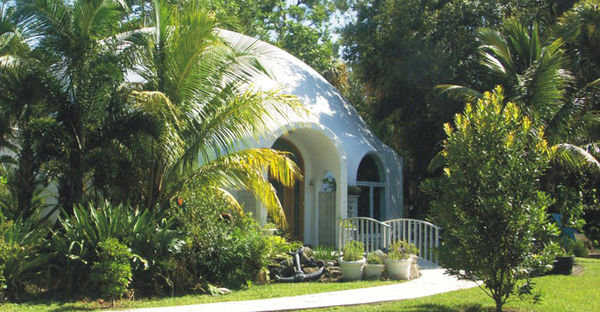
The first factor Kollar and Dulacska considers is that the materials of shells are elastic at most only up to a certain limit; after this they become plastic (“physical nonlinearity”). Due to the intricacy of shell-buckling problems, only a few attempts have been made to assess theoretically the effects of plastic behaviour. Hence, they use a simple approximate method that corrects the results of elastic stability theory by taking the effects of plastic behaviour of the material into account.
Although no major hurricanes have hit the U.S. coast so far this year, states like Florida will be vulnerable to severe storms for the next several months. But there’s at least one Florida family that isn’t worried about what the next few months will bring, or for that matter, the next several decades.
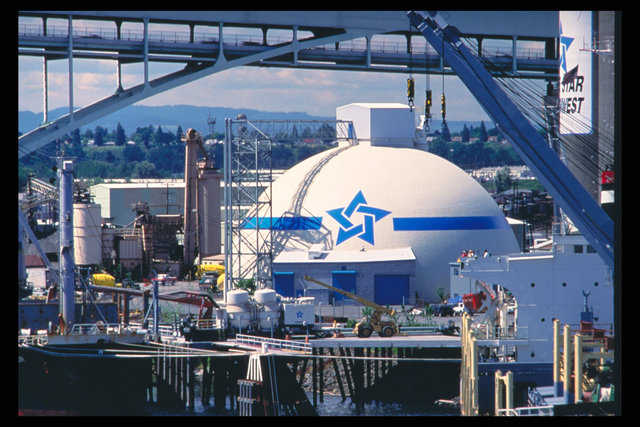
Gary Madson, General Manager of Cement Operations for Lone Star Northwest, Inc., described their Monolithic Dome cement storage facility as, “a highly visible symbol for our company right in the heart of Portland.”
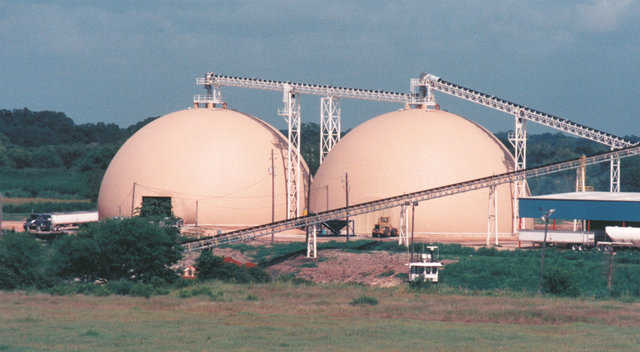
Since the fiercest hurricane on record to hit the U.S. blasted the Texas coast in 1900, Equalizer’s location certainly is in a hurricane zone. That hurricane-proneness was one of the main reasons Equalizer decided on Monolithic Domes for the storage of their two products: ammonium nitrate and diammonium phosphate.

Chris Zynda is the current president of the American Shotcrete Association and a regular contributor to the organization’s quarterly publication, Shotcrete Magazine. In the Spring 2009 issue, he turned to his archive to select a project to feature in the “Shotcrete Classics” section of the magazine. His choice was White Memorial Seventh-Day Adventist Church in Los Angeles, a dome church with a 35,000-square foot sanctuary that seats 2,000, an adjoining chapel that seats 250, and a 10,000-square-foot classroom wing that connects the two buildings.
For a very long time we have known, planned around and used the thermal inertia of the Monolithic Dome. We call that thermal inertia the thermal battery. Why battery? Because significant savings in heating and cooling equipment can be achieved if you can trim the highs and lows by using the battery.
While they certainly are not a cure-all for skyrocketing utility expenses, there are three simple and easy but effective things you can do that should help keep your home comfortable and your costs down.